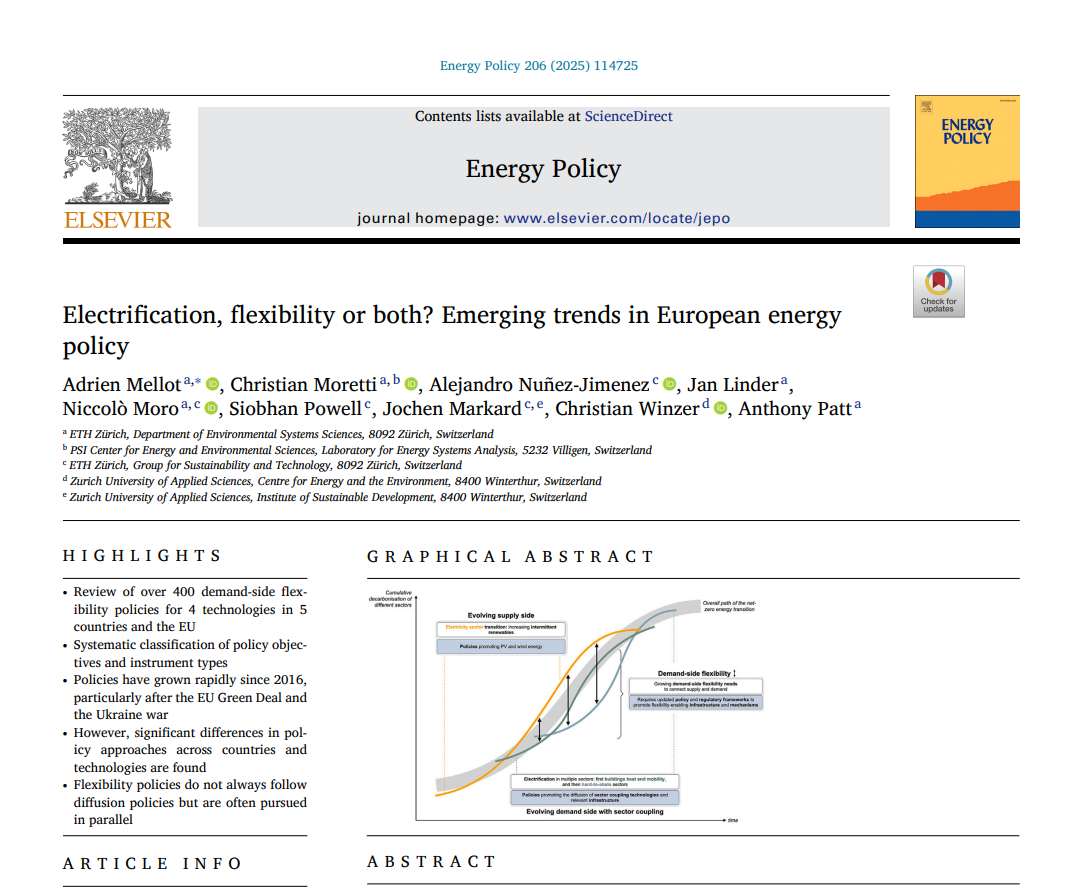Electrification, Flexibility, or Both? New Study Maps Europe’s Policy Evolution
A comprehensive mapping of 400+ European electrification and flexibility policies exposes misalignments across countries and technologies.

An exciting new study published in Energy Policy reveals surprising differences and trends in how European policymakers balance two key strategies for the energy transition: electrification and demand-side flexibility.
Both strategies are important. Electrification helps reduce emissions by switching energy consumption from fossil fuels to decarbonized electricity, for example, through the adoption of electric vehicles and heat pumps. Increasing demand-side flexibility helps balance electricity supply and demand to facilitate the integration of more renewables, which cannot follow demand as well as more traditional sources of generation.
The article reviews more than 400 policies from 2016 to 2024 across Austria, France, Germany, Italy, Switzerland, and the European Union (EU). It focuses on four technologies that play important roles in sector coupling: electric vehicles, heat pumps, hydrogen electrolyzers, and new industrial loads.
The findings are striking. Contrary to the assumption that flexibility policies tend to follow diffusion policies, the study finds that both policy streams are increasingly pursued in parallel. The findings also reveal wide variations across countries and technologies.
“Supporting flexibility isn’t just about technology—it’s about setting the right policy framework to allow companies and users to better balance supply and demand,” says SusTec co-author Alejandro Nuñez-Jimenez. “We found that some countries are making progress, but others still lack the basic technologies and policies needed for flexible energy use. This can become a problem during peak demand in the middle of heatwaves or at times of low renewable generation.”
The study offers one of the first broad comparisons of flexibility policies across Europe. It also highlights how recent developments—like the EU Green Deal and the energy crisis triggered by the war in Ukraine—have pushed countries to act faster, though not always in the same direction. For example, France has introduced strong measures to promote flexible electricity use, while Germany has placed more emphasis on industrial electrification and hydrogen.
This article was a major collaboration led by Adrien Mellot at ETH Zurich, with the participation of Christian Moretti at ETH Zurich and PSI, SusTec researchers Alejandro Nuñez-Jimenez, Siobhan Powell and Jochen Markard (also at ZHAW), Jan Linder, NiccolòMoro and Anthony Patt at ETH Zurich, and Christian Winzer at ZHAW. This work was performed within the PATHFNDR project, which is sponsored by the Swiss Federal Office of Energy’s SWEET program.
Read the full article:
- Mellot et al. (2025). “Electrification, flexibility or both? Emerging trends in European energy policy.” Energy Policy, 206, 114725. external page https://doi.org/10.1016/j.enpol.2025.114725